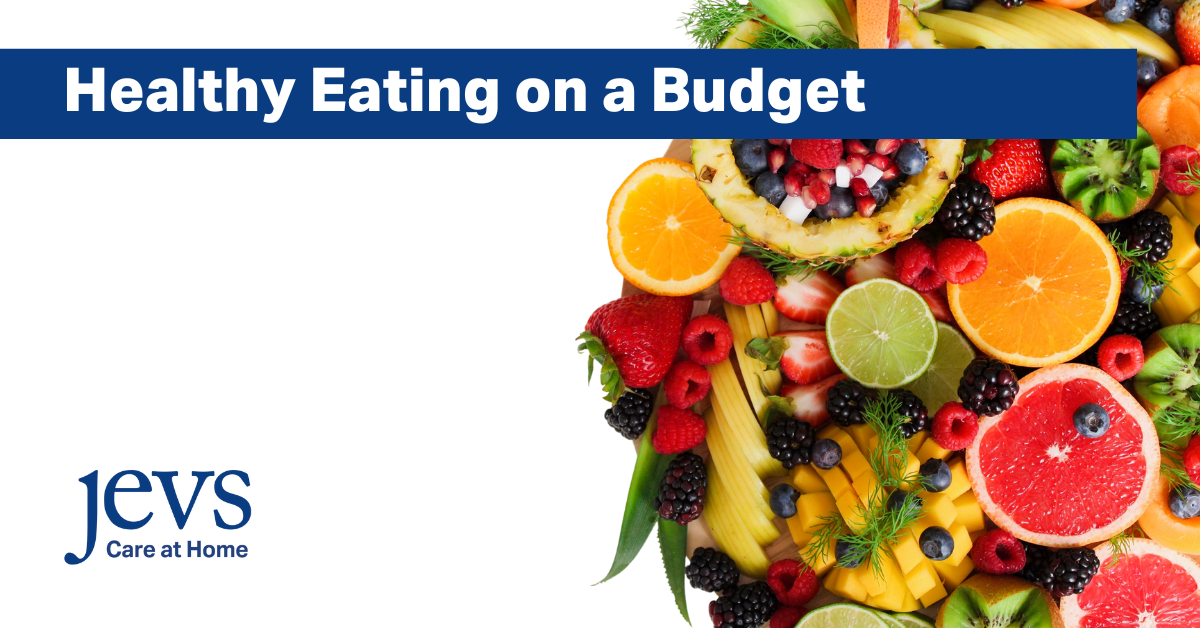Practicing good nutrition can be a challenge, especially if you need to watch what you spend. Healthy foods like seafood and other lean proteins can be expensive, and cost is a reason why many people choose fast food or junk food over healthier options. But eating better on a budget is not as difficult as you might think. Plenty of delicious foods are both healthy and inexpensive. And if you change some of your eating and shopping habits, you can save a lot of money to put towards better nutrition. To celebrate National Nutrition Month®, here are some ways to eat better and save money.
Eat Out Less
Eating out is a great way to treat yourself, but doing it often, like ordering takeout or buying ready-made meals, can be expensive. Making the same $15 meal at home is much cheaper. You can even prepare multiple meals for the price of one restaurant dish or store-bought items. Cooking at home not only saves money but also lets you control the amount of salt, fat, and sugar in your food. This is important if you’re watching your weight or have health conditions like high blood pressure.
Websites like Eating Well and The Food Hub from the American Diabetes Association have many healthy recipes that are also simple to prepare.
Plan Ahead
When you go shopping, it can be easy to spend more than planned. The Journal of Consumer Research says that shoppers who don’t use a shopping list spend an average of 23% more than those who do. To save money, plan your weekly meals and snacks before you go shopping. Check your pantry and fridge, then make a list of only what you need for your planned recipes.
Shop Smart
Look for supermarket sales in your local newspaper, online, and in-store circulars. Coupons and special discounts can help you save on expensive items like meat. Also, compare markets in your area and you will probably find one that has better everyday prices on the items you buy. Join your favorite store’s rewards or loyalty program to get special discounts and collect points.
Buy Larger Sizes or “In Bulk”
Buy large sizes of things you use regularly so that each meal you make costs less per serving. Nuts, dried fruits, and other healthy snacks can be purchased in bulk, which makes them much cheaper. Also, prepare double batches of your favorite recipes. Use the additional servings for other meals during the week or freeze them in individual containers to use within 3-4 months.
Drink Water
Water is essential for good health. It aids in digestion, helps us retain nutrients, supports cognitive function and healthy skin, and more. And choosing water over soda or other sweetened beverages will help you save money. Drinking tap water also helps protect the environment. Fill a reusable bottle with tap water and some ice and reach for it whenever you’re thirsty!
Buy In-season Fruits and Vegetables
In-season fresh fruits and veggies usually cost less, so plan meals around what is in-season and easy to find in your local markets. If what you want isn’t in season, look for frozen or canned options, which can also be budget-friendly. “Just be sure to compare the ingredients list and nutrition facts panel to make sure you’re not getting a product with added ingredients,” says The Centers for Disease Control (CDC). Looked for canned fruit that is packed in water or 100% juice. For canned vegetables, look for labels marked “no salt added.”
Choose Store Brands
Most supermarkets carry their own brands of popular items like canned and frozen vegetables, dairy products, and dried pasta, and quality is usually the same as national brands. According to the CDC, buying generic or store brand versions of the foods and ingredients you use regularly can save you 20% to 30% on your grocery bill.
Shop for foods that are in season
In-season fresh fruits and veggies usually cost less, so plan meals around what is in-season and easy to find in your local markets. If what you want isn’t in season, look for frozen or canned options
Look for Low-cost, High-nutrition Foods
Some inexpensive foods are quite nutritious. According to the Academy of Nutrition and Dietetics, you can stretch your food dollars AND practice good nutrition by cooking recipes with ingredients like “beans, peas, and lentils; sweet or white potatoes; eggs; peanut butter; canned salmon, tuna or crabmeat; [and] grains such as oats, brown rice, barley or quinoa.”
Start Your Own Garden
If you have the space, a garden is an inexpensive way to get the vegetables and fruits that are the backbone of healthy eating. You can find packets of seeds for tomatoes, leafy greens, and more at garden centers, hardware stores and other retailers. Gardening is good exercise, too.
Shop at Farmer’s Markets
If you don’t have a yard or other space for a garden, local farmers markets such as the ones managed by The Food Trust in Philadelphia offer an abundance of veggies and fruits at prices that are often much lower than supermarkets.
These tips are a few ways that you can eat better while saving money. If you or a loved one need help with food preparation or cooking, JEVS Care at Home can help! Contact us today to learn more about our services and how we deliver award-winning care.
Posted in Blog